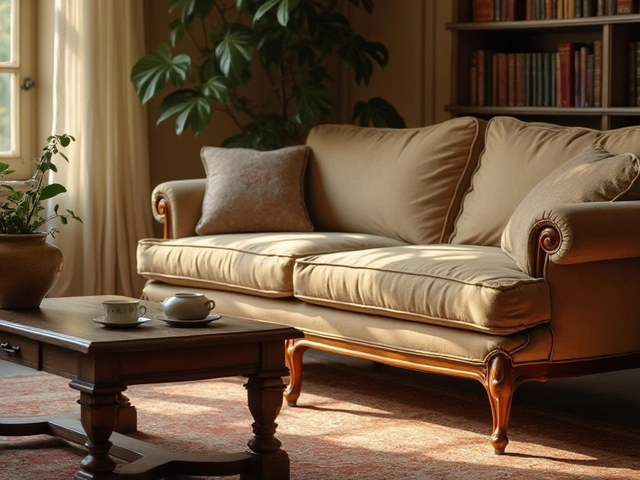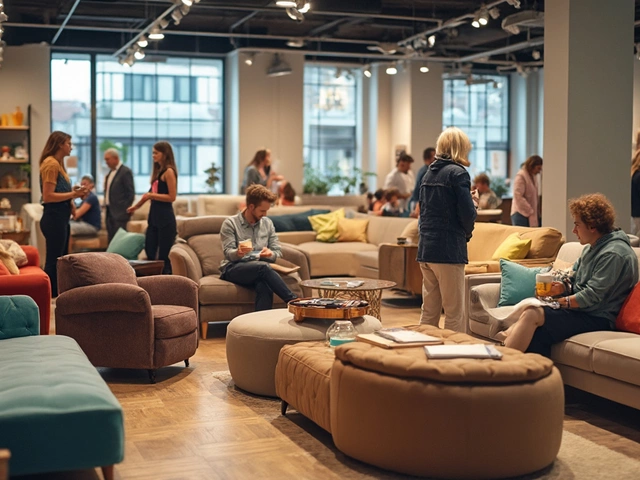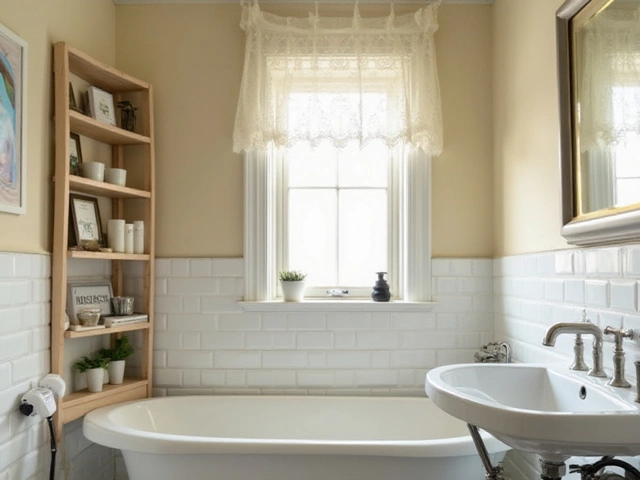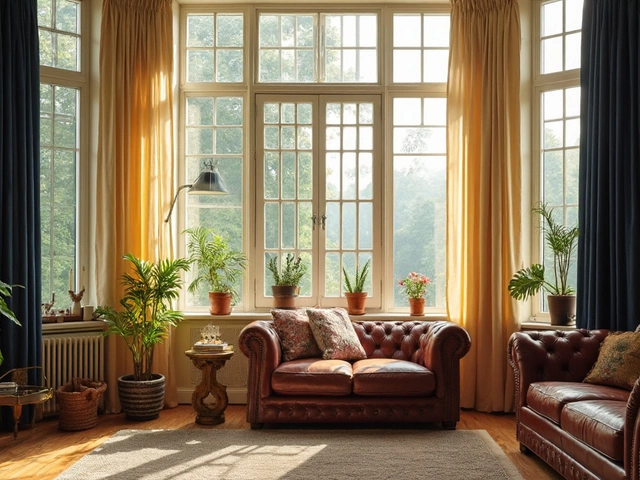Finding Your Perfect Sofa: Tips, Styles, and Considerations
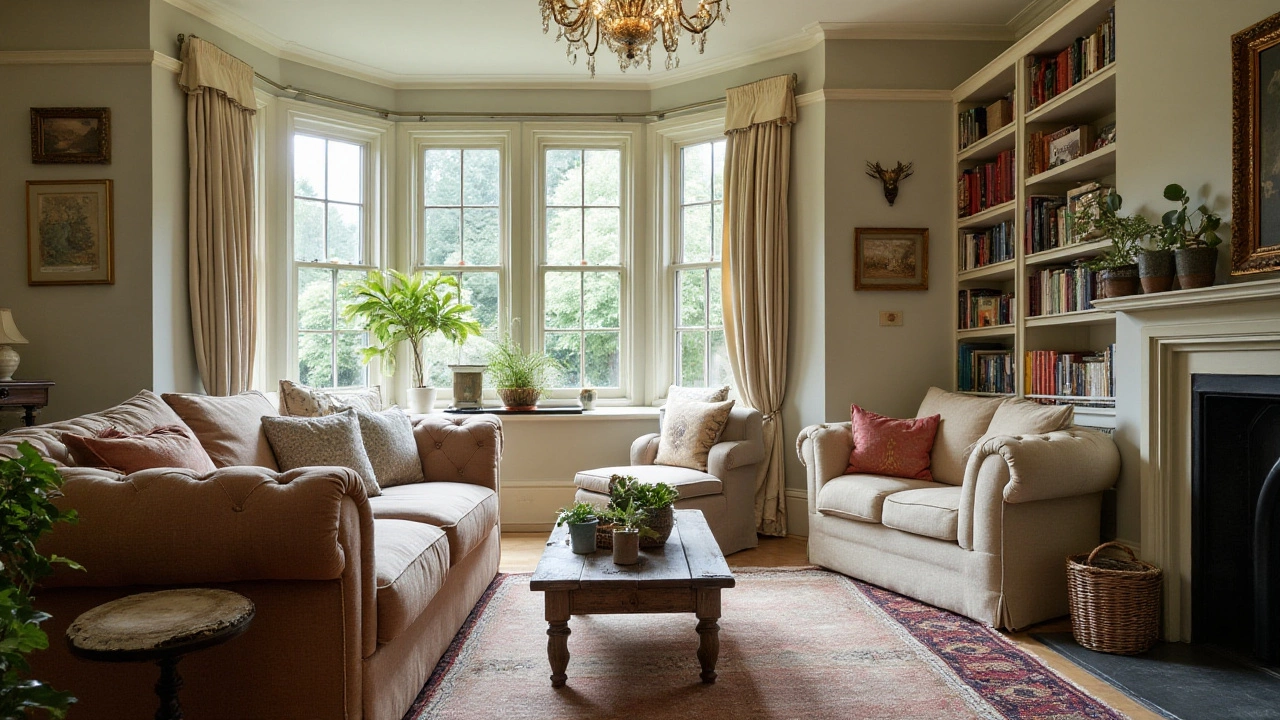
Choosing a sofa is like selecting a new partner for your living room; it needs to fit just right and blend seamlessly with your life. With so many options available, finding ‘the one’ might feel daunting. But fear not, as diving into the sea of choices can also be an exciting adventure.
Before you commit, think about your space. Measuring accurately is key to avoiding mishaps right from the start. Next, consider who will be using the sofa and how it fits into your daily activities—it's not just a piece of furniture, it's the heart of your living room, a spot for conversation, relaxation, and perhaps even naps.
- Understanding Your Space
- Prioritizing Comfort and Functionality
- Selecting the Right Materials
- Latest Trends and Styles
Understanding Your Space
When embarking on the journey to find the perfect sofa, the first crucial step begins right at home. Your living space is more than just a room; it is the canvas where your memories are painted, and choosing the right sofa is akin to picking the right brush stroke for your masterpiece. Understanding the dimensions and flow of your room is essential. A critical aspect is measuring the available space precisely. Start by measuring the length, width, and height of the room, taking into consideration any architectural features like windows, doors, or fireplaces that might affect the sofa’s placement. Remember, a sofa that might look appealing in a showroom could easily overwhelm a smaller room or disappear into a vast one.
Once you have the dimensions, think about the configuration. If your room is a common gathering space, possibly an interior design focal point, a sectional might serve your purposes well, allowing you to optimize seating space and configure it according to your room's specific layout. For cozier settings, a standard three-seater or a loveseat can add charm without overwhelming the area. Another integral component is understanding the movement within the room. Consider the foot traffic and ensure that the sofa's placement doesn't disturb the natural flow. A vital statistic to remember is that designers recommend leaving about 18 inches of space between the sofa and the coffee table to maintain an easy passage.
The next consideration is the function and versatility of the space. Is your living room predominantly used for family movie nights, or is it an area primarily for entertaining guests? The function should inform the style and size. If your sofa is intended for leisurely weekends of lounging, sacrificing a bit of style for plush comfort might be worth it. Conversely, if your living room demands a more formal setup, streamline designs with clean lines may align with your demands. In this aspect, you should also envision long-term adaptability. For instance, if there’s a chance your household will expand, consider future needs in your planning.
If you change the way you look at things, the things you look at change. — Wayne Dyer
Additionally, consider the natural light your room receives throughout the day. A sofa’s color and material can be significantly affected by natural light, which may alter its appearance over time. Lighter fabrics in sun-drenched rooms can lead to discoloration, while darker shades provide varying reflections through different times of the day. For such challenges, think about adding blinds or curtains to control sunlight exposure or selecting fade-resistant fabrics. This approach ensures the long-lasting beauty of your sofa while adhering to the evolving trends in both form and function.
Finally, create a visual plan before purchasing. Layout sketching or using room-planning apps can offer a dynamic picture of how different sofa styles will fit. Some platforms even allow you to insert 3D models of the furniture into your room’s photo, helping you visualize better. Gathering these insights will enable you to harmonize your living space with practical and thoughtful action. After all, a sofa isn’t just where you sit; it’s where you live.
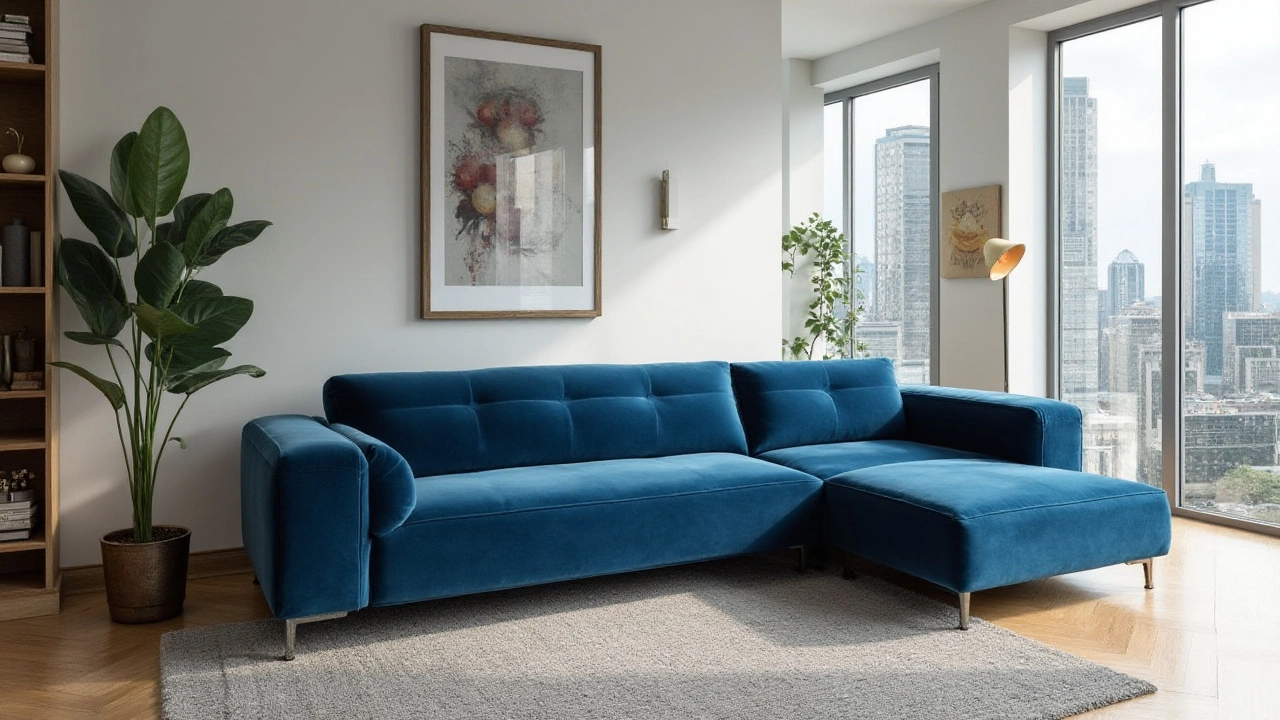
Prioritizing Comfort and Functionality
The quest for the perfect sofa isn't just about what looks good—comfort and functionality should sit at the forefront of your decision-making process. Think about lounging on a weekend afternoon, or having friends over for a movie night. Your sofa needs to cater to both. Delve beyond aesthetic considerations to explore how a sofa will perform in realistic settings. For people with lively households featuring kids or pets, durability mingled with comfort is a non-negotiable factor. High-density foam cushions offer firm support without sacrificing that sink-in feeling people crave after a long day.
Consider also the depth and height of the seating. Tall individuals might appreciate deeper seats, while those on the shorter side could find them cumbersome. People often overlook armrest height, yet it's paramount for ensuring cozy positioning. Another factor is reclining options; they transform a regular sofa into a versatile furnishing. A sofa with built-in recliners might be bulkier, but for those prioritizing comfort, it’s often worth it.
"Good design is about orchestrating elements how they behave and work together," says Patricia Urquiola, esteemed designer known for blending modern aesthetics with comfort.The sofa frame material also deserves attention. Wooden frames are robust but might absorb more shock than alternatives, while metal frames provide a stay-put base but risk coldness, literally and aesthetically, without added layers. Not to overlook the sofa covers' role, fabric versus leather, cotton versus synthetic blends—each choosing makes a statement about functionality, upkeep, and style.
Let's not forget integrated storage solutions increasingly present in contemporary sofas. Hidden compartments can discreetly store remote controls, magazines, or even cherished family games. This smart functionality keeps living areas clutter-free while upholding style integrity. Imagine sliding out a built-in table, perfect for snacks or laptops, during a casual weekend brunch. Functionality that adjusts itself to anyone’s lifestyle ensures that your beloved sofa stands the test of time, catering to needs as they evolve.
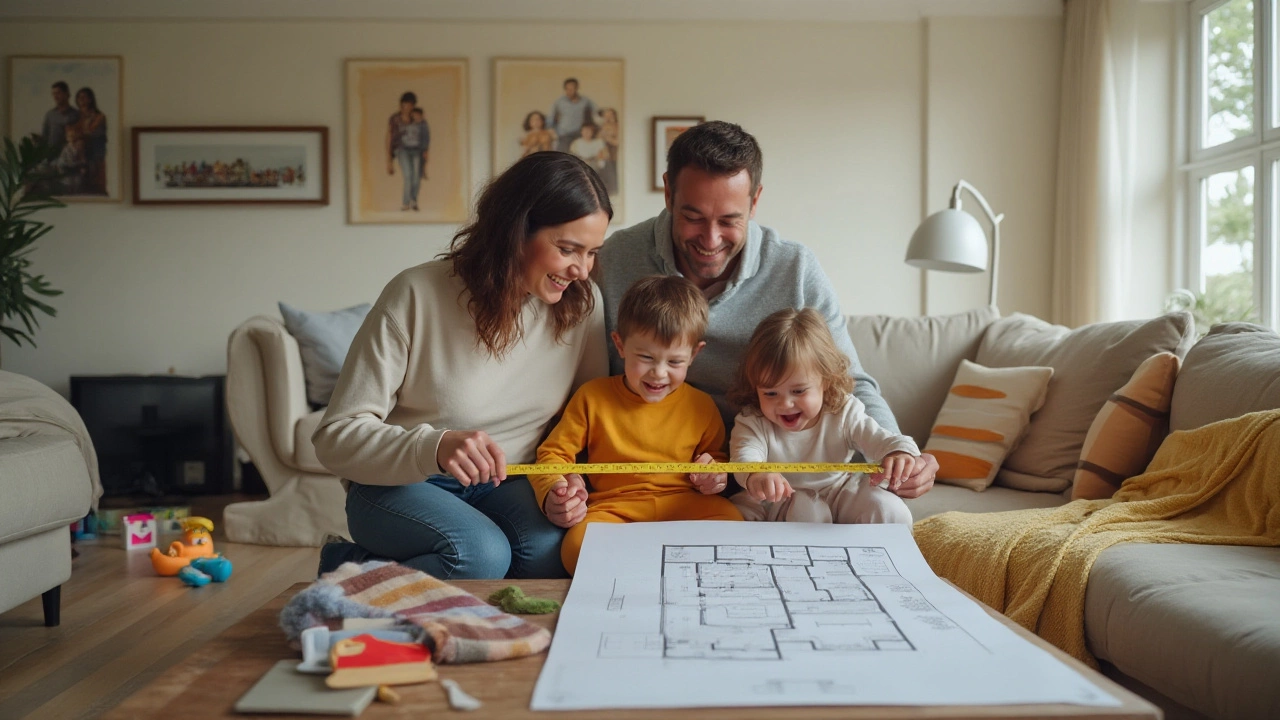
Selecting the Right Materials
When it comes to choosing the right materials for your perfect sofa, there is a delightful array of textures and colors waiting for your exploration. It's not just about which color complements your wallpaper, but also about the fabric's durability and how easy it is to care for in your daily living. Leather, for instance, offers a sleek and timeless look, and it develops character over time, making any minor scratches or wear blend seamlessly into its rustic charm. Conversely, a microfiber sofa is known for its resilience and incredible ease when it comes to cleaning, especially if you have active toddlers or enthusiastic pets at home. These resilient materials also stand up to spills, making them invaluable for bustling households.
In the exciting world of fabrics, cotton and linen are popular choices for achieving a more relaxed, casual aesthetic in your living room. However, the wrinkle-prone nature of these natural materials might be a trade-off you’ll need to consider if low maintenance tops your list of requirements. More contemporary fabrics like polyester blends offer enticing durability and fade resistance, perfect for keeping vibrant hues as bold as the day you bought the sofa. As you navigate these options, pay attention to thread count and weave, as they often hint at the fabric's longevity. High thread count usually equates to greater durability—a principle that savvy consumers should keep in mind.
Interior design experts often emphasize the importance of interacting with your chosen material before committing fully. "A sofa not only needs to look great but also feel great," remarks Sarah Richmonds, a renowned interior designer known for her remarkable eye in combining elegance with coziness.
"The tactile experience of your sofa can significantly influence your enjoyment of your space. Take time to feel the textiles against your skin as touch is a crucial part of the furniture experience."This experiential dimension can ensure your selection aligns flawlessly with your expectations for comfort and luxury.
The environmental footprint of your chosen material can also be a consideration. As more consumers lean toward sustainable options, materials such as organic cotton and bamboo are becoming increasingly popular. These sustainable alternatives not only reflect a commitment to eco-conscious living but often bring unique textures and softness to the furniture world. Additionally, if allergies are a concern, synthesized materials might offer hypoallergenic benefits, as they resist dust mites, a crucial factor in maintaining a healthy home environment. Understanding the interplay between aesthetics, functionality, and lifestyle compatibility will ensure you select a material that best aligns with your vision of a living room oasis filled with both charm and practicality.
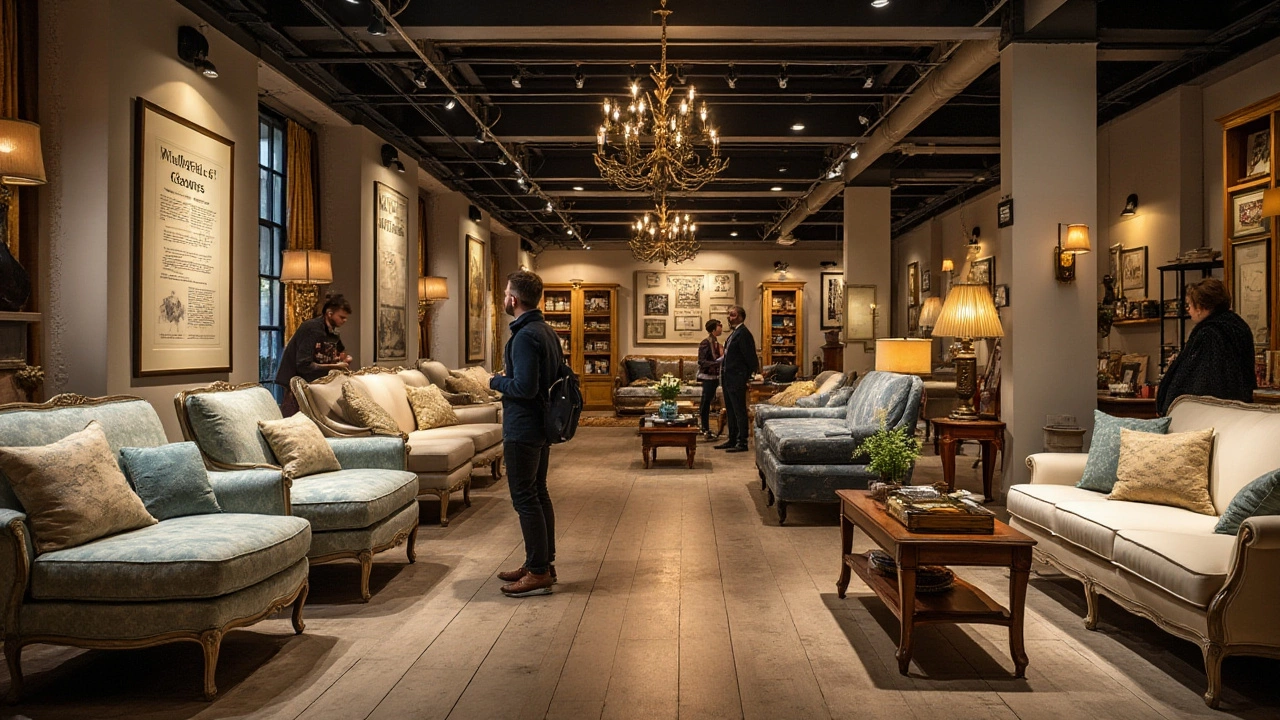
Latest Trends and Styles
The world of interior design is ever-evolving, and when it comes to sofas, style trends are no exception. Embracing the latest trends can transform your living room into a cutting-edge space, with your sofa as its glorious centerpiece. Recently, there has been a surge in demand for retro-inspired designs, harking back to the mid-century modern aesthetic. These styles often feature clean lines and a minimalist appeal, along with vibrant or earthy tones that bring a pop of personality.
While retro is making a comeback, sustainability is taking the lead as a predominant trend. With environmental consciousness on the rise, eco-friendly sofas made from organic and recycled materials are becoming a favorite choice. These sofas boast not only in their design narrative but also in their capability to lessen carbon footprints. Plush fabrics such as velvet and natural fibers like cotton and linen are preferred for their luxurious feel and sustainable nature. According to the Global Furniture Industry's report, sofas made from these materials have seen a 25% increase in market demand over the last two years.
An emerging trend in living room aesthetics is the personalization of spaces through custom sofa configurations. Modular sofas are increasingly popular choices, allowing users to rearrange sections according to taste and function. Whether it's a large gathering or a cozy family movie night, these sofas adapt to meet any need. From L-shaped to U-shaped configurations, the ability to customize your perfect sofa is appealing to a wide range of homeowners.
"Personal expression through home décor is becoming increasingly valuable," says Elizabeth McKnight, a leading expert in home design trends. "People want their homes to reflect their unique personalities and interests."
For those who adore a touch of nostalgia, the reintroduction of bold colors is another significant trend to watch. Deep blues, emerald greens, and sunlit yellows are making waves, offering homeowners a chance to make a statement with their sofa. These shades inject energy and warmth, challenging the long-reigning neutral tones. Moreover, pairing vibrant hues with metallic accents like brass or gold legs can add a luxurious touch to the overall ensemble.
Style Meets Technology
Technology also plays a pivotal role in the evolution of sofa designs. Innovative features such as built-in USB ports and Bluetooth speakers are seamlessly integrating technology with comfort. This fusion not only enhances the functional aspect of sofas but also caters to the tech-savvy crowd seeking convenience in their furniture choices. In fact, the integration of tech elements has resulted in a shift towards 'smart sofas,' anticipated to grow significantly by 2025.

